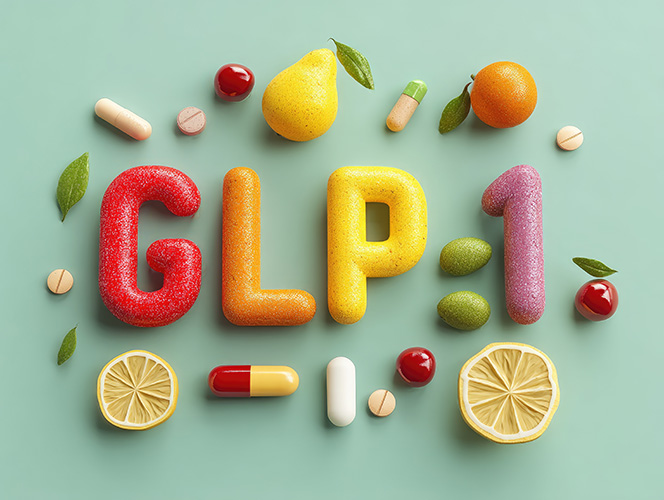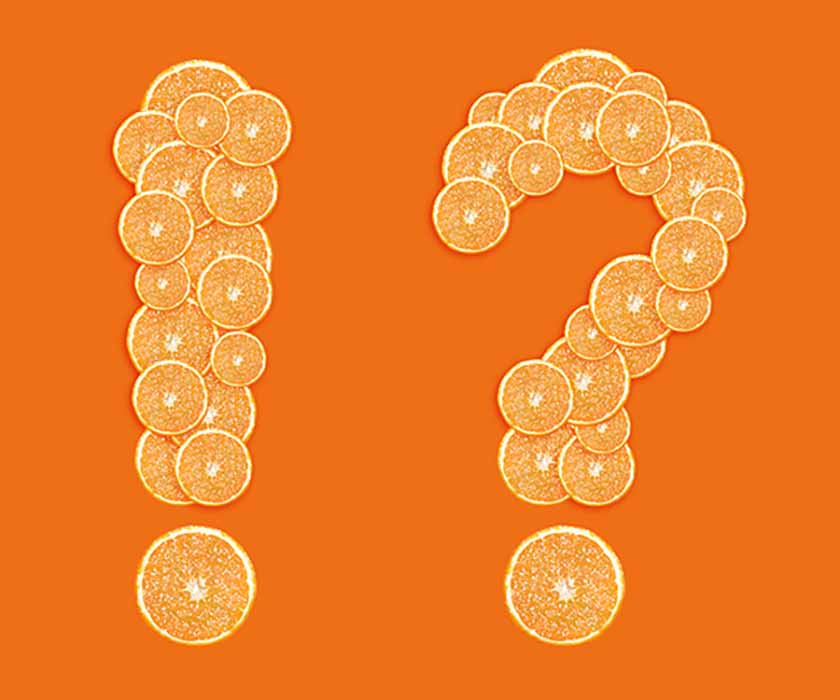Formulating GLP-1 Foods using Citrus Fiber
GLP-1 drugs entered the limelight promising weight loss to handfuls of overweight and/or diabetic consumers. Despite shedding the pounds, consumers also grapple with finding healthier foods tailored to their new diet regime. Two ingredients, fiber and protein, are staple ingredients when formulating GLP-1 foods. This includes upcycled Citri-Fi® citrus fiber, which at low usage levels (<1%), binds water and oil to improve texture, stability and nutrition in a variety of foods like nutritional bars, protein shakes, yogurts and frozen meals.
Another miracle worker pill joined the cluster of weight loss products and services. But this time, the class of GLP-1 drugs or GLP-1 receptor agonists hit the public eye due to its speedy results – shedding the unwanted pounds. GLP-1 stands for glucagon-like peptide-1. This hormone resides naturally in the human body. Not only does it help regulate blood sugar and suppress the appetite, but there are also other benefits which include slowing the digestive process. As a result, people feel fuller for longer.
Several of these GLP-1 drugs hit the U.S. market including Wegovy, Ozempic and Mounjaro. They each have their own physiological mechanism which aids in achieving the end goal of losing weight. However, despite this magic bullet’s weight loss promise and catchy commercial jingles, GLP-1 consumers quickly realized that their previous diet needed to be tailored to their new drug regime. Formulating GLP-1 friendly foods opened the door for opportunities.
The GLP-1 Effects on the Food Industry
Currently, the verdict is out whether this new pharma invention will impact food and beverage sales. Some companies decided to play the wait and see game. While others embraced the market opportunity and launched new products. But why would companies be on edge with this wonder drug?
First off, since GLP-1 drugs slow down the gastric emptying, consumers tend to eat smaller portion sizes. When one does the math, reducing the portion size equates to lower food and beverage sales. Another effect of the drug is that consumers are not reaching for high caloric, low nutrient dense foods like savory or sweet snacks, alcoholic drinks or sweetened beverages. They prefer healthier options. Because of this, GLP-1 consumers are shopping the outer edges of grocery stores looking for whole and nutritious foods versus processed foods. And for those who want healthier versions of their previous diet, they are seeking out GLP-1 foods created specifically with them in mind.
Secondly, this new drug line creates some uncertainty for the weight loss product world. These include products such as nutritional bars, frozen meals, shakes and powdered drinks. Either the companies will need to re-formulate to make their products more GLP-1 friendly or create new product lines specifically targeting this market.
Formulating GLP-1 Foods: Protein and Fiber
This group of consumers tend to limit their refined carbohydrates and fat intake and focus more on the fortification of the foods. The key ingredients in GLP-1 foods are protein and fiber. The dietary fiber helps consumers feel satiated and aids in healthy digestion. Alternatively, the protein also helps with the feeling of fullness, but, it plays another crucial role in the new diet.
GLP-1 weight loss does not just target undesirable fat. It also leads to incidental muscle loss. And in elders, this can exacerbate a condition called sarcopenia. Therefore, formulating GLP-1 foods needs to incorporate dietary fiber and high levels of protein to help consumers improve their overall wellbeing. In addition, other food ingredients such as biotics, electrolytes and zero calorie sweeteners are other formulating tactics to improve the overall nutritional profile of GLP-1 foods. Sought out foods include eggs, nuts, legumes and unsweetened yogurts.
GLP-1 Ingredients Weigh in Citrus Fiber
Dietary fiber, being a panacea ingredient, comes in various forms. They differ by botanical source, processing methods and composition. Citri-Fi is an upcycled fiber from the citrus juicing industry. The process, which is free from chemical modifications, opens up the fiber to create high water holding and emulsification properties. Because of this dual functionality, Citri-Fi can improve the texture, stability and nutrition of a variety of food and beverage formats.
When formulating GLP-1 friendly food, Citri-Fi can enhance the eating experience while still staying within the consumer diet parameters. For instance, protein shakes are a popular go-to meal replacement or snack for GLP-1 consumers. Citri-Fi citrus fiber, at less than 1% usage, creates additional viscosity and creamy texture without the use of food gums or starches. As a result, the food labeling stays clean.
Dairy products such as yogurts are another preferred food staple due to its innate healthy halo and inherent protein content. In some cases, manufacturers are enhancing yogurts to contain additional protein. At the same time, yogurts suffer syneresis or water separation during storage. Hydrocolloids like pectin, carrageenan, guar gum and modified food starch are typically used to minimize syneresis. However, a clean label option is Citri-Fi citrus fiber. At low usage levels, this citrus fiber binds the water to control syneresis over time. Due to its small granular size, Citri-Fi creates a creamy and thick texture.
Another popular GLP-1 food comes in the form of a frozen meal. Many of these food items rely on dressings and sauces to create a flavorful eating experience. However, the freeze/thaw cycle tends to break down sauces which causes water and/or oil to separate. Citri-Fi, at low usage levels, can bind the water and/or oil to create a stable sauce during heating and freeze/thaw storage conditions.
Besides being a dietary fiber, Citri-Fi is also non-GMO Project certified, allergen-free and gluten-free. There is a USDA certified organic version, the Citri-Fi 400 series, which provides the same benefits as the flagship 100 series. Labeling options include citrus fiber, dried citrus pulp or citrus flour which can be used when formulating GLP-1 foods.
Counting Calories or Counting Days
Will GLP-1 drugs be the blockbuster marvel for years to come? Consumers will be the ultimate barometers when it pertains to the effectiveness of weight loss drugs. It will take some time for these new drugs to be vetted by the public. In the meantime, some food companies that jump on the product development bandwagon may reap the short-term financial payouts. On the other hand, other companies may count the days anticipating a shake-out before investing. For those food and beverage companies willing to take the gamble, ingredients like Citri-Fi citrus fiber are available to shorten the development time, improve the quality and clean up the labels.
For more information, please contact us.




